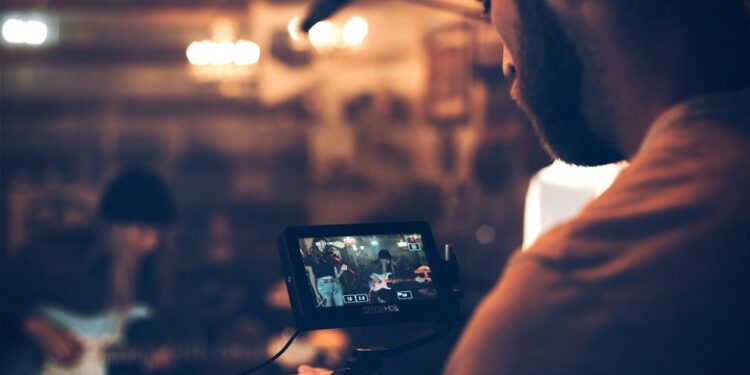Advancements in technology have provided us with more accessible ways to stream video content on various platforms.
It’s now much cheaper and easier to stream videos on YouTube, Facebook Live, and even on your own website compared to, say, a decade ago. Even complete beginners nowadays can create content with minimal equipment: you can technically stream your videos with just your smartphone.
However, if you are serious with your live streaming broadcasts, then you might need to invest in better equipment, and fortunately, nowadays you don’t really need to invest tens of thousands of dollars to get your live streaming gear.
What Will I Need To Set Up Live Streaming?
Let’s first break down what you’ll need to broadcast your live video.
While your setup may vary depending on your budget, the objective of your live stream, and other factors, in general, there are only four major elements to consider in any live streaming gear:
- Video and Audio Source
- Encoder
- Video hosting platform
- Internet connection
That’s it!
Your live streaming workflow will generally involve connecting your audio and video sources to your encoder (hardware or software) and then setting up connections between the encoder (or computer) and the video hosting platform.
Once everything is properly connected, you can easily hit record and live stream your content right away.
Below, we will discuss these four essential elements in more detail:
1. Video and Audio Source
Video Source
Your video source can be a video camera, a prerecorded video file on your computer, or even content re-streamed from other platforms (i.e YouTube). In a live streaming setting, however, you’ll most likely need at least one camera, and nowadays there are various different types of video cameras to choose from:
Entry-level cameras are more affordable and typically compact/lightweight. Nowadays even your laptop’s webcam can provide relatively good video quality, but they are dependent on good lighting conditions. These entry-level cameras can be below $500.
Prosumer cameras can range from just below $1,000 to $3,000. They can provide relatively good image quality with pretty decent connectivity (HDMI). DSLR and mirrorless cameras belong to this category.
Professional video cameras typically characterized by professional connectors like SDI and XLR. Can produce a really high-quality image even in poor lighting conditions, but they can be very expensive.
Audio Source
You’ll need at least one good enough microphone for your live streaming. We can also differentiate microphones into three different categories based on their sound quality and connectivity.
- Built-in microphones: for example the one you have in your smartphone. These obviously provide the lowest sound quality but they are also the most affordable
- USB and 3.5 mm microphones: the mid-tier microphones. Built-in mics on prosumer video cameras can be categorized in this tier.
- XLR microphones: highest sound quality and compatible with top-grade audio mixers
2. Encoders
Encoders are very important for live streaming. Essentially they ‘encode’ the live stream from your video camera as one complete video file instead of a collection of individual images. This allows the video file to be streamed reliably by:
- Reducing the overall file size
- Reduce buffering for the viewers
- Change resolution or aspect ratio
- Change audio format or quality
- Meet a target bit rate
- Ensuring the video is compatible with a certain device or software
We can choose between hardware or software encoders for our live stream:
Hardware encoders are dedicated hardware processors, typically you connect the audio/video source to the encoder box via HDMI and SDI, and then connect the hardware encoder to your computer. They are typically more expensive but can provide more reliable performance with lower latencies.
Software encoders are essentially programs that run on your computer/smartphone. There are free and affordable software encoders like OBS, vMix, or Wirecast that are pretty reliable, but you’ll need a capture card or other means to connect your video/audio sources to your computers.
3. Streaming Solution
You have various different platforms on which you can stream, but in general, you have three main options:
- Using free social platforms, mainly YouTube and Facebook to live-stream. The positive side is that you can potentially reach these platforms’ massive audience base, and you don’t really need to handle the technical side. But you’ll have less freedom in what types of content you can stream, branding, and monetization.
- Streaming on your own website. There are various platforms that will allow you to do this, and you can also do it yourself (with the help of a professional web developer). You’ll get more freedom with this method in personalizing your video player and your content, and you wouldn’t need to worry about breaching content regulations, and so on.
- Do both. You can stream both on your website, while simultaneously also stream on Facebook and YouTube, among other platforms. Professional online TV broadcasting tools like Viloud allow you to easily do this, so you’ll get the best of both worlds with this method.
We’d recommend using a professional video hosting platform so you can stream your content both on your website/app and relevant third-party platforms to maximize your reach.
4. Internet Connection
A reliable and fast enough internet connection is very important to ensure a smooth streaming experience for your viewers. At the very least, your bandwidth should be 1.5 times your stream’s target bitrate. For example, if your target bitrate is 4 Mbps, then you’d need at least 6 Mbps of bandwidth. If you can, aim for at least 2 times your target bitrate (with the same example, 8Mbps of bandwidth).
Conclusion
Once you’ve taken care of the four core elements we’ve discussed above, then broadcasting live video over the internet should be a breeze. The right video/audio sources, proper encoder, the right video hosting service, and reliable internet connection are the keys to deliver high-quality live broadcasts and keep your viewers around.






